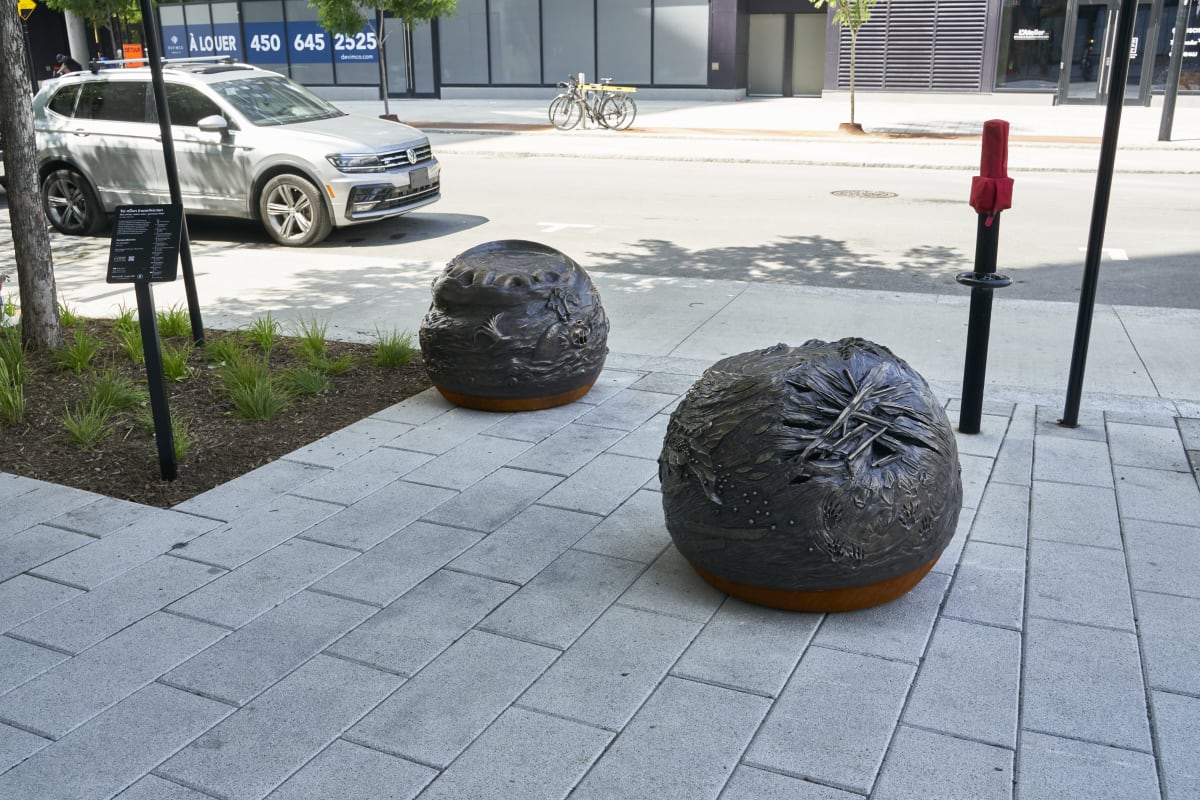Our ways: Peel Trail
This urban trail is composed of bronze sculptures in honour of Iroquoian peoples and newcomers to the island of Montréal. The sculptures are an invitation to reflect on and bring together Aboriginal and non-Aboriginal cultures. Come and see them from the Lachine Canal to Mount Royal.
An audio and visual experience
The trail, called “Tsi niion kwarihò:ten” in Kanien’kehá:ka (the Mohawk language) provides a brief look into the island’s history since the arrival of the Europeans. You can listen to its accompanying podcast offered in English and French, via the free Portrait Sonore application available on Google Play and the App Store.
Peel trail

The trail extends along the length from Rue Smith in the south, to Mount Royal Park in the north, includes:
- 11 thematic stations
- 2 bronze sculptures per station
Sculptures inspired by the Words Before All Else ceremony
The trail offers a dialogue between the work of two artists, one Kanien’kehá:ka, MC Snow, and the other non-indigenous, Kyra Revenko. The themes are inspired by the Kanien’kehá:ka ceremony of thanks, Words Before All Else. This ceremony is performed by an Elder to start important meetings.
Archaeological discoveries were the impetus for creating the trail
Between 2016 and 2019, archaeological excavations in the Rue Peel and Rue Sherbrooke area uncovered remnants of an Iroquoian village dating from the 14th century. This important discovery was the inspiration for the trail. Cast iron tree guards along the street reproduce a motif found on pottery that was discovered during the excavations.
A co-creation project
The trail was the result of a co-creation project carried out with the Kahnawà:ke band council, members of the Kahnawà:ke Mohawk community, urban design professionals, archaeologists and city representatives.
The project was made possible thanks to the following partners:
- Artists MC Snow and Kyra Revenko (artwork design and sculpture)
- Civiliti and FNX-Innov (urban design)
- Générique Design (industrial design)
- Ethnoscop (archaeological support)
- Atelier du Bronze foundry
- Portrait Sonore and Yändata’ (podcast)
Learn more about how the trail was designed:
Quick search
Need help?
Contact us if you have questions.
Are you sure you want to leave this page?
This page is not available in English. You will be redirected to the English home page.




